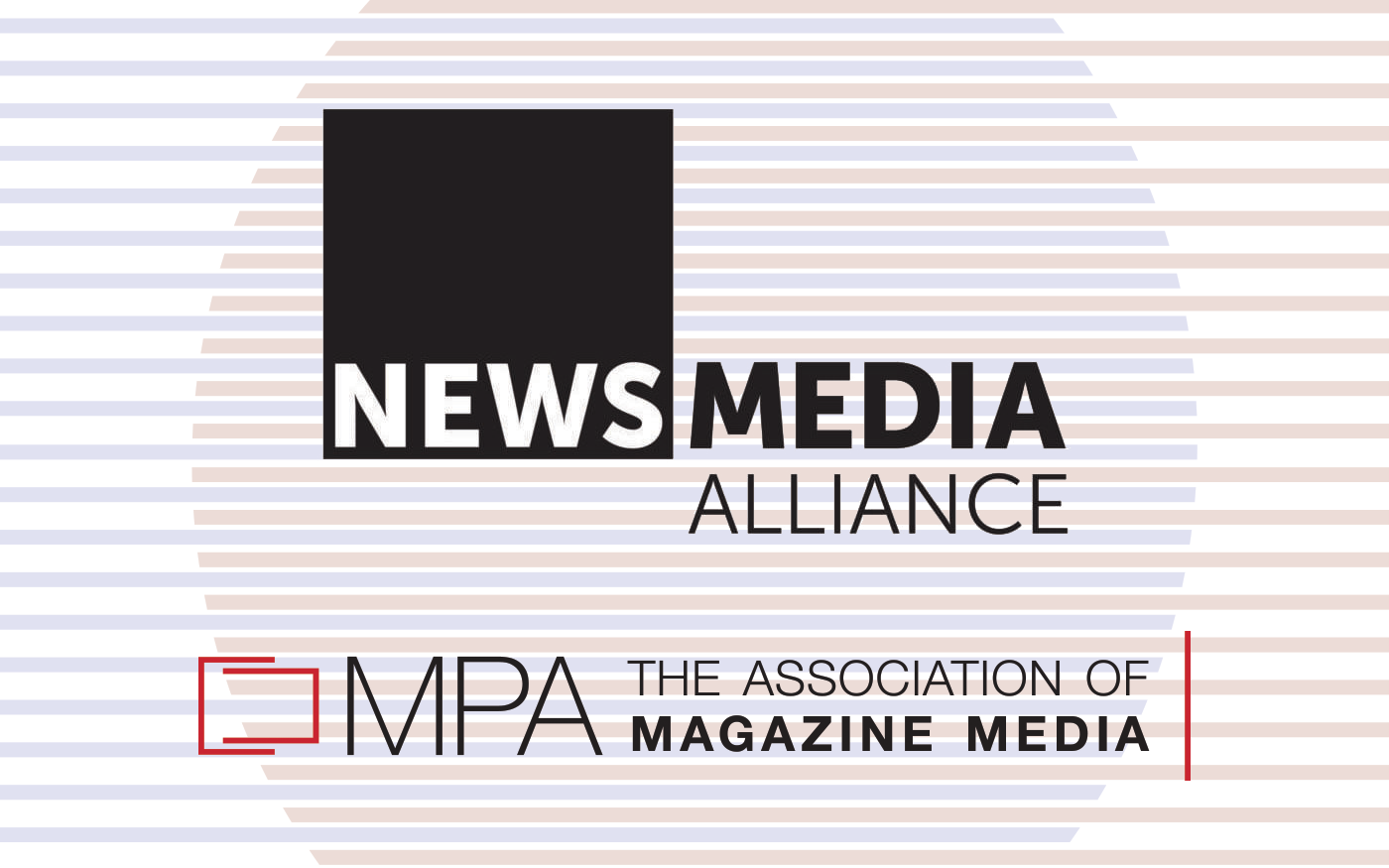The News Media Alliance picked up firepower Friday in its long fight for bargaining power with platform companies as its merger with MPA – The Association of Magazine Media was approved by members of both groups.
Industries that once seemed distinct in format, content, frequency and distribution have become much more similar in the digital era. And they find common ground for lobbying, both to gain leverage on compensation for their content from Google and Facebook and to bargain on postal rates.
The merger agreement, which I reported three weeks ago, leaves NMA, representing American newspapers and a smattering of other media companies, in control of the combined entity. Its president and CEO David Chavern will be CEO of the expanded situation.
In a joint interview, Chavern and Rita Cohen, senior vice president of MPA, told me negotiations for the merger spanned several years. They had been initiated by two large companies that were members of both groups — Hearst and Condé Nast/Advance.
The two industries together have $45 billion in annual revenues, Chavern estimated, $20 billion for newspapers and $25 billion for magazines. “That’s big,” he said. “By contrast, recorded music is a $15 billion (a year) business.”
While each of the publication categories has struggled with fading print ad revenues and the difficulty of digital transformation over the last 20 years, the associations are financially healthy. Chavern said that NMA’s research and training arm, the American Press Institute, has an endowment of roughly $45 million. NMA itself has another $15 million or so in rainy-day operating reserves.
Cohen declined to provide comparable figures for MPA but added “we were not about to fold (for financial reasons) — I wouldn’t want to leave that impression.”
MPA had been based in New York City, the center of magazine publishing, since its founding in 1919. But it moved its offices to Washington (where NMA is based) in 2019 to focus more on advocacy.
Its annual American Magazine Media Conference, typically held at ritzy resorts in places like Bermuda and Palm Springs before moving back to New York, was discontinued during the pandemic and will not be revived, Cohen said.
The NMA discontinued its own annual conference several years ago, now participating with several other associations in the so-called Mega-Conference.
Chavern said that he hoped there would be an occasion for the combined association to meet jointly with product specialists, whose work spans editorial and business functions and whose jobs are similar at magazine, newspaper and purely digital companies.
Another commonality, he and Cohen said, is that both newspaper and magazine media are increasingly focused on daily digital reports and are venturing into events, video and podcasts.
But the main event will be lobbying, and its top objective is to extract more money from Facebook and Google for content they use on their platforms.
NMA has been working for years to get an antitrust exemption so that newspapers can negotiate collectively with the platform companies. The idea is embodied in the Journalism Competition and Preservation Act, a bill that failed to pass in 2021, currently being revised for reintroduction in this session of Congress.
Similar laws aimed at the platform companies and the hurt they have inflicted on publishers passed this year in Australia and are being introduced in other companies.
Google and Facebook can be counted on to fight back. The companies argue, correctly, that they send traffic and advertising opportunities to publishers. However, they also set the rules and rates, harvest data on users and then sell their own advertising products (which have sucked away digital ad dollars from media companies).
At times, Google and Facebook have said they may just drop news content if publishers don’t like the deal they are getting. “That’s misdirection,” Chavern said. “News may be a small fraction of their content … but it is a big driver of consumer engagement.”
Should the Journalism Competition and Preservation Act pass, it is unclear what would unfold next, Chavern and Cohen said. Larger companies like The New York Times and Hearst have the leverage to strike their own deals and might choose to continue to do so. But for smaller independent publications, the collective bargaining could prove to be a life raft.







